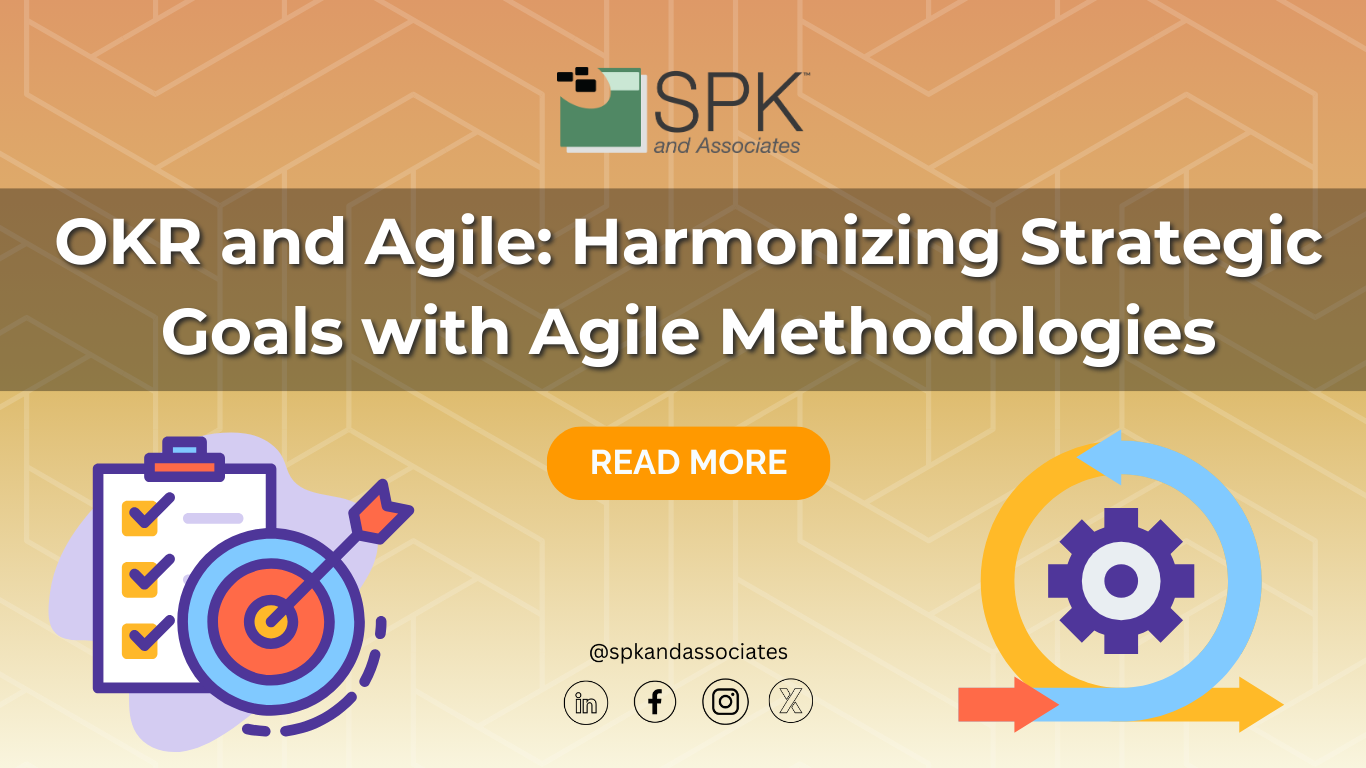Objectives and Key Results (OKRs) and Agile methodologies like Scrum, Kanban, and SAFe are powerful frameworks designed to boost productivity and keep teams aligned. OKRs drive strategic goal-setting and measurable outcomes, while Agile approaches like Scrum focus on delivering value iteratively. Integrating these two approaches can create a seamless connection between long-term objectives and day-to-day execution, enhancing alignment and performance. Here’s how this integration can work using the Atlassian marketplace plugin, “OKR Board for Jira by Oboard.”

Understanding OKRs
OKRs help organizations set clear and ambitious goals and track progress using measurable outcomes. This framework is structured around two core components:
- Objectives: These are qualitative, inspiring, and ambitious targets that provide clear direction. Well-crafted Objectives should be:
- Ambitious yet achievable: Pushing the team to perform at its best without being unrealistic.
- Qualitative and motivational: Describing what success looks like in an inspiring way.
- Simple and concise: Clear and easy to remember.
- Key Results: These are specific, measurable outcomes that define what achieving the Objective looks like. Effective Key Results should be “SMART”:
- Specific: Clearly defined and understandable.
- Measurable: Quantifiable metrics, such as “Increase revenue by 20%.”
- Achievable: Challenging yet within reach.
- Relevant: Directly aligned with the Objective.
- Time-bound: Set deadlines to maintain accountability.
Example: A Quality Assurance (QA) team might have an OKR aligned with a broader organizational goal to improve user satisfaction:
- Objective: Decrease the number of user-reported bugs in Q3.
- Key Results:
- Increase test coverage from 70% to 80%.
- Implement automated regression testing to catch 90% of new bugs.
- Deploy a test case management system.
Overview of Scrum
Scrum is an Agile framework designed to break projects into smaller, manageable iterations called Sprints, usually lasting two weeks. Each Sprint focuses on delivering a usable product increment, allowing for quick adaptation to changes and continuous improvement. If you’re not familiar with Scrum, you won’t get all of the info you need in this blog post. But if you are knowledgeable about Scrum but unsure how to integrate OKRs, here is a great resource for you.
Integrating OKRs with Scrum
OKRs and Scrum are complementary frameworks. By effectively combining them, teams can ensure that short-term Scrum goals contribute to the achievement of long-term strategic OKRs. Let’s talk about some of the key roles and responsibilities and how they can emphasize the inclusion of OKRs into the way they work.
- Scrum Master: Traditionally responsible for guiding the team in Agile practices, the Scrum Master can also serve as an OKR champion, promoting the alignment of day-to-day tasks with broader goals.
- Product Owner: Responsible for maximizing the product’s value, the Product Owner can define OKRs that reflect strategic priorities, ensuring the team stays aligned and can pivot based on feedback.
Aligning Scrum Goals with OKRs
Scrum goals defined during sprint planning should connect to OKRs to ensure that each iteration advances strategic objectives. For instance, a Sprint goal might focus on increasing test coverage, aligning directly with a Key Result.
Using the earlier QA OKR example:
- Objective: Decrease the number of user-reported bugs in Q3.
- Sprint Goals: One Sprint could focus on setting up automated regression testing, another on deploying the test case management system, and subsequent Sprints on expanding test coverage.
Objectives and Key Results Drive Change
It’s important to remember that OKRs should focus on driving significant changes and not include routine business-as-usual tasks. Sprints can still dedicate themselves to ongoing responsibilities or KPIs unrelated to OKRs while focusing on strategic goals during other Sprints.
Leveraging OKR Board for Jira by Oboard
OKR Board for Jira enables teams to align OKRs with Jira projects seamlessly, allowing for efficient tracking and management of progress. Here’s how to get started with the app.
Getting Started:
- Setting Objectives: In OKR Board, navigate to “Objectives” and create a new Objective, specifying the OKR level, owner, and description.
- Creating Key Results: Open your Objective and add Key Results, ensuring each is aligned with your strategic priorities. Aim for 3-5 Key Results to maintain focus.
- Linking Jira Epics to Key Results: Connect Jira Epics to Key Results to map high-level tasks. If an Epic doesn’t exist, you can create one directly from the plugin.
- Automated Progress Tracking: As linked Jira issues are completed, the OKR Board automatically updates progress, providing a real-time overview of achievements.
Adding Granularity with Stories, Tasks, and Sub-tasks
For detailed planning, break down Epics into Stories, Tasks, and Sub-tasks. This granular approach allows the OKR Board to monitor Key Result status accurately as each component of the Sprint is completed.
Using JQL to Connect Sprints and OKRs
The integration can be further customized using Jira Query Language (JQL). This allows teams to link entire Sprints to Key Results and automate updates efficiently.
Example JQL Query:
- Project = “XYZ” AND Sprint = “Sprint 4” connects all issues from Sprint 4 in Project XYZ to a specific Key Result.
What’s Your Next Step with Jira and OKRs?
By integrating OKRs with Scrum using OKR Board for Jira organizations can harmonize strategic and operational efforts. This approach fosters continuous improvement, ensuring that day-to-day tasks drive meaningful progress toward ambitious goals. If you’re looking for a way to get more out of Jira, contact our team today.











